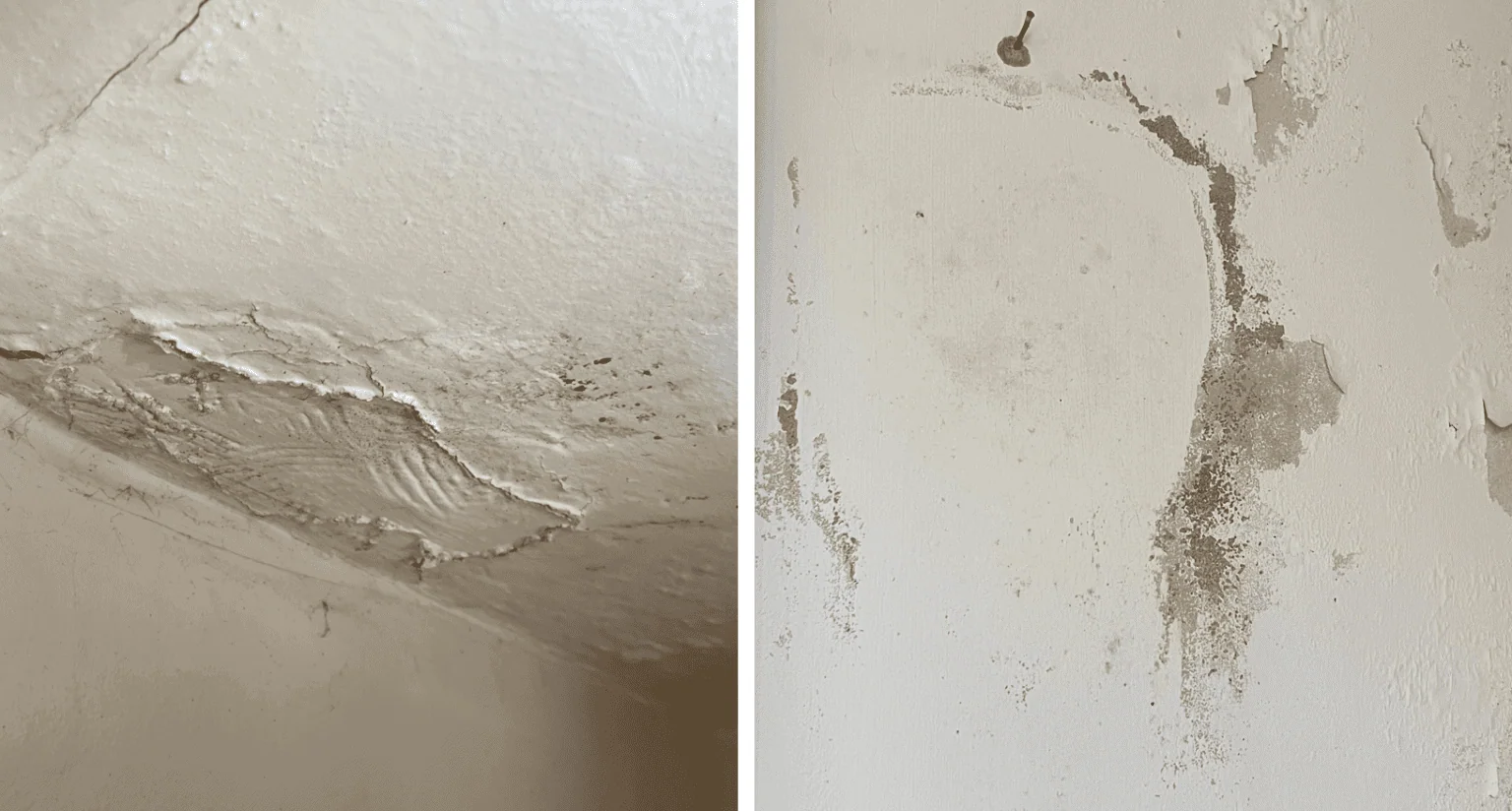How to make a successful water leak insurance claim
Most home insurance policies cover the cost of finding and repairing a leak, but only if you follow a certain process. It can be confusing, and your claim might be refused if you fail to act quickly enough. By following the advice below, you’ll understand how to make a successful water leak insurance claim. You’ll also make fewer mistakes if a leak happens, meaning a stronger case that your insurance firm will find hard to challenge.

What does ‘escape of water’ mean?
The ‘escape of water’ is a term insurers use for leaks that come from inside the property; think water from a leaking pipe, appliance, tank or heating system. According to the Association of British Insurers (ABI), one in four household insurance claims are for the escape of water, and over 80% of those happen because of burst or leaking pipes. The most commonly affected spaces are the kitchen and bathroom, but because concealed pipes run throughout the home, a leak could damage any part of your property.
Book a leak detection expert

Our specialists use advanced equipment and techniques to uncover hidden leaks.
- 99% of leaks found and fixed
- Insurance claim support
- Half-hour rates from £49.50 + VAT
- £10 off when you book online
What to do when you notice a leak in your home
If water’s dripping from your ceiling or wall, you’ll immediately know there’s a leak. The evidence isn’t always this obvious though, and you may only suspect a leak once you notice yellow or brown staining, or a growing dark patch of moisture on the ceiling or wall. In either case, a water leak can prove more destructive, and more expensive, than you first think. That’s why you should never ignore the visible signs of moisture.
The older the damage looks, the less likely it is that your insurer will pay for it. Also note that if you get a leak fixed without telling them (to protect your no-claims bonus), they can refuse to pay if the leak comes back in the future.
Here’s our rundown of what you should do:
1. Minimise the leak damage
Insurers expect you to do everything you can to limit the damage; this is called mitigation. If water’s pouring in, such as through a burst pipe, the first thing you should do is switch off your internal stopcock (or stop valve), then run your taps to drain the system. If you don’t know where your internal stopcock is or have trouble getting access, you can turn off the water supply by closing the mains stopcock outside your property. You should also turn off the electrics if the leak is bad enough.
Most leaks don’t result in lots of water escaping quickly. Some pipe faults can be so small that they open and close with a change in temperature. Even if you think you have a slow escape of water, get the issue investigated and fixed as early as possible. This rule applies to all mystery leaks, no matter how big or small you believe them to be.
2. Record evidence for your insurance firm
Collecting proof is an important part of the claims process, and the more persuasive it is, the higher the chance of success. Take photos of walls or ceilings, along with anything else that may have been damaged. This includes household items, so you can claim on your contents insurance. If you have a smaller leak, take photos as soon as possible. You can then take more pictures as the problem gets worse, essentially using them as ‘before and after’ shots.
A leak detection expert will provide a detailed report that strongly supports your water damage claim. A plumber should supply you with a report in case of a burst pipe.
Below: The left image shows water damage to a ceiling. Right, damage to a wall from the same leak.

3. Contact your insurance company
Now’s the time to let your insurance firm know what’s happened. Whether you make a claim online or by phone, you may want to have your policy number ready, along with a list of any damaged possessions. When you contact your insurer, they’ll probably send you a link or email so you can submit the evidence you’ve taken.
4. Book in a trace and access service
If you don’t know the exact location of the leak, or if it’s concealed in any way, you’re going to need a trace and access investigation from a leak detection expert. They’ll use a number of non-invasive techniques to pinpoint the source of the damage, such as a moisture survey, pressure testing, thermal imaging, moisture analysis, tracer gas testing, borescope camera, acoustic tests and tracer dyes.
These cover the ‘trace’ part of the service. The ‘access’ part involves getting eyes on the source of the leak, and this may involve removing a section of ceiling, floor or wall. It’s a good idea to present the evidence to your insurer before this part of the job goes ahead, depending on the advice they give.
Important! Never try to uncover the leak yourself. Water takes the path of least resistance, tracking along pipes, conduits and cables, either horizontally or vertically. For example, water damage on a ceiling could be several metres from the leak’s origin, and even after you’ve exposed concealed pipes, you may still be none the wiser. Because there’s no guarantee of finding the cause this way, insurance providers usually insist on the non-destructive trace and access approach.
5. Deal with the loss adjuster
If your home insurance claim is likely to be expensive, your insurer may send a loss adjuster to investigate. It’s their job to work out the cause of the fault, decide if you’re fully covered, and calculate the cost of the remedial repairs. As a third party, they’re meant to be impartial in their assessment. Their report will be used by your insurance provider to make a final decision on your water leak insurance claim.
6. Get quotes for the reinstatement work
Next, you’ll need to get quotes for the repairs to your home. This work is known by insurers as ‘reinstatement’, which covers things like brickwork, plastering, flooring, and redecorating. Once the reinstatement’s complete, and as long as you’re covered for the reinstatement work, your insurance company will pay either you or the tradesperson directly.
Your insurer may try to pressure you into using one of their approved tradespeople, but remember that you have the final say. The same applies if you need a chartered surveyor to write up a scope of restoration work.
Help made easy: Following an investigation (charged at a half-hourly rate), and accessing the source of a leak, an Aspect leak detection expert can provide separate fixed quotes for the leak repairs and reinstatement work. This will make it quicker for you to make a claim.
Home insurance companies | What’s the difference?
We researched Aviva, Admiral, Direct Line and Lloyds Bank (four of the UK’s most popular brands) to see what’s covered, what isn’t, and how their services differ. While we’ve worked hard to ensure this information is correct at time of publication, the below is only a guide. Note that companies also take each water leak insurance claim on a case-by-case basis.

What you’re covered for
Insurers cover water damage caused by leaking pipes, tanks, appliances and fixed central heating systems. A successful payout may cover any damage to the structure or contents of your home, barring the excess you agreed to when you took out your policy. We’ve found the biggest differences arise when you need trace and access, which not all policies cover as standard.
Trace and access
Aviva pays £5,000 towards trace and access, and this figure counts towards the cost of reinstatement – such as repairing a floor following an underfloor leak, or a wall or a ceiling that your engineer had to break through to visually expose and stop the leak. Direct Line pays the same amount with their most basic home insurance package, but this figure rises to £10,000 with Home Insurance Plus, then £15,000 if you go with their Select Premier option.
Admiral pays nothing unless you choose from their Gold or Platinum packages, which offer up to £5,000 and £10,000, respectively. Lloyds Bank pays for the cost of leak detection with no arbitrary limit. However, you’ll need their agreement before your leak specialist tries to get visual confirmation by accessing the potential source.
Below: A member of our team uses thermal imaging to find the source of a leak.

What you won’t be covered for
Aviva, Lloyds Bank, Admiral and Direct Line may reject your water leak insurance claim if the cause stems from ‘wear and tear’. This refers to a lack of maintenance, such as worn roof tiles or old grouting around the bath, and extends to pipes that have degraded over time without being repaired. They’ll also likely refuse if your home has been empty for 60 days or more.
Roofing is only covered in sudden events such as storm damage. Insurance firms won’t pay if there’s a leak because of blocked gutters, missing rendering or flashings, or if your roof materials are past their life expectancy.
Poor installation work is another reason for your water damage claim to be refused. That’s why it’s always worth choosing an experienced tradesperson for your roofing, heating and plumbing needs.
At Aspect, we have a large team of leak detection specialists ready to help. Our full range of trace and access techniques allow us to pinpoint leaks quickly and effectively. These methods, along with a detailed investigation report, can strongly support your home insurance claim. We’re also happy to provide fixed-price quotes for the repair and reinstatement work.
With a full investigation, repair and reinstatement service available, we’re on hand to lend the urgent support and professional care you need.
Areas we cover

We cover the whole of Greater London, the South East, the East of England, and parts of the Midlands.
We can schedule leak detection work in Bedfordshire, Berkshire, Buckinghamshire, Cambridgeshire, East Sussex, Essex, Greater London, Hampshire, Hertfordshire, Kent, Norfolk, Northamptonshire, Oxfordshire, Suffolk, Surrey, West Sussex, and Wiltshire.
If you are outside of this coverage area, we may still be able to assist you. Our scheduling team will check availability for your location. Call or submit a callback request, and a member of our team will be in touch with you.
Was this article helpful?
Think we could improve this article? Please let us know